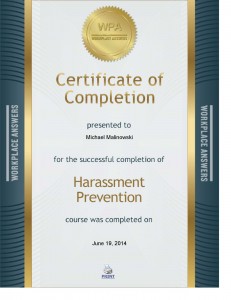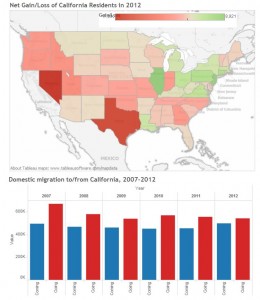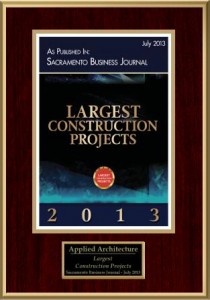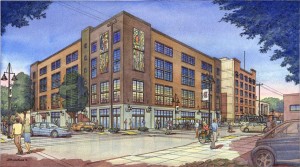If you want to go fast, go alone If you want to go far, travel together Google says this is an African saying . heard from John Padillia in his run for AIA Secretary
Category: Notes
Harassment training completed
Hitchhiker
18 Things Creative People Do
As shared with me by Richard Raisler: 18 Things Creative People Do Creativity is far mare than the right/left brain distinction we’ve come to know. Science now understands that creative thinking calls for complex brain processes, distinct neural pathways and emotions; making it very different from the standard thinking process we all use every day. Research has found that creativity involves the coming together of many traits, behaviors and social influences in a single person. The so-called “tortured” creative may in fact be a more complex person than say an accountant or programmer. So, let’s look at some of the characteristics and behaviors that creative people share. 1. They daydream, knowing this isn’t a waste of time. Mind wandering has been shown to help the process of creative incubation. Also, lots of time great ideas come out of the blue, when we’re thinking about something else. 2. They observe, seeing possibilities and potential in all things. They are constantly taking in details that are then the basis for creative expression. 3. They work hours that work for them. Some people are naturally better in the morning; others are more plugged in late at night. Creatives know what time of day they work best, and structure their time to accommodate that. 4. They spend time alone, without fear. They are comfortable spending time alone, allowing the mind to wander. 5. They turn obstacles around, using pain or hurt as the catalyst to creative growth and the chance to see new possibilities. It’s the fuel that brings a new perspective on reality. 6. They seek new experiences. Being open to new experiences, sensations and states or mind is a good predictor of creative ability. Openness to experience is the strongest predictor of achievement in a creative field. 7. They are resilient, with the ability not to take failure as something personal. Really good creative fail a lot. 8. They ask big questions. Creatives are always looking for answers, generally living an examined life. They look around and want to know the why and how of why things are the way they are. 9. They people watch so they become keen observers of human nature. This practice can supply some of their best ideas. 10. They take risks, thriving off the feeling of putting things out there. Being a true creative is not for the timid or thin skinned. Or anyone too caught up in what others may think of them. 11. They see life as a chance to express themselves. 12. They follow their real passions. They are motivated to act based on an internal desire and are energized by challenging activities. 13. They get out of their own heads, putting distance between ones own limited perspective and looking at other ways of thinking and living. 14. They lose track of time, so when they are working they get “in the zone” (also known as a flow state) and this helps them create at a higher level. 15. They surround themselves with beautiful things. Creative people tend to have exceptional taste, and they enjoy having beautiful things around. 16. They connect the dots, seeing possibilities where other people don’t. Creativity is the ability to connect dots that others might not think to connect. 17. They constantly shake things up to get a diversity of experience that is key to being creative. 18. They make time to be mindful. These people know the value of a clear, focused mind, and meditation is a wonderful tool for achieving that end. Richard A. Raisler Founder trueHUEnews
My answers to some good quesions posed by Shannon Calder at AIACC
Good Firms and Healthy Practices . What do the best firms do to be successful? Survival is the core ‘best practice’ – and still a challenge for many as the recovery is spotty both geographically and re work type. After survival one can start to consider mentoring; customer service; community service; and service to the profession. . How do best firms create a model for others? Sharing; which is tough in a hyper competitive environment. Sharing best practices is the only way all boats can rise. . What defines a great practice? Open / sharing culture that transends fear of competition; sustainable business practices that transend business climate fluctuations; consistent investment in building connections to the public, allied professions, the aia, employees / prospective employees, students, and – oh yeah – clients . . What was the defining point which inspired you to jump off and begin your own firm? Ego and confidence conspired to make that leap possible; once leapt, hard to climb back onto the ledge . What do you think is the single biggest issue impacting the profession in the future? Relevance to the business community and the public. If the profession is thriving, there is energy and time for all the rest to fall into place; where there is no prosperity, all that is good is challenged and struggles. Michael F. Malinowski AIA President, Applied Architecture Inc
Permit Process Streamlining Update: Charlotte NC
From: Mike Malinowski [mailto:mfm@appliedarts.net] Sent: Friday, January 31, 2014 5:52 PM To: ‘Bartl, James’ Subject: Thanks and Kudos for your work on Permit Process Streamlining Mr Bartl I would like to again personally thank you for being generous with your time in both phone interviews and in our chat at the WoodSolutionsFair held in Charlotte on the 29th. Id also like to take a moment to again compliment you and your team on what youve accomplished. As you know, Ive been researching the benefits of more efficient and effective permit processing around the country. Prior to speaking on this topic in Charlotte, Ive made presentation in cities such as Minneapolis, Portland OR, Baltimore, Santa Rosa CA, and Denver. In Denver I teamed with nationally known Permit Streamlining consultant Robert Wible to talk to design professionals from around the country about the substantial benefits that more effective and efficient permit processing can bring to their communities. As you know, these benefits include reduced costs for both public and private sectors, economic stimulus to the community, and the advantages that come with updated, higher performing buildings that contribute to a more sustainable and efficient built environment. As I noted in my remarks to some of the 200+ design professionals who braved cold and icy conditions to be at the convention center in Charlotte the other day, the programs, processes and attitudes toward customer service that Ive found in Charlotte are outstanding. Charlotte/Mecklengburg is at the forefront of a handful of jurisdictions that are at the cutting edge in creating and implementing programs and processes that help customers get to yes without any compromise to their core mission in protecting the public health, safety and welfare. What is really incredible is that the numbers show that youve maintained the quality of the various programs in place in spite of the economic stresses and staff losses that were the result of the deep recession that is finally coming to an end. I plan to use the successes and forward looking innovations on the horizon that you and your team have stewarded in Charlotte/Mecklenburg as a core case study model when I speak along with co-presenter Robert Wible on the topic of Permit Streamlining Architects as Change Agents in June at the 2014 AIA National Convention in Chicago. I hope it works out that your schedule will permit you to join us at this largest gathering of Architects in the United States; but in any event I plan to stay in touch and keep up with your progress as you continue to move forward. Cheers Michael F. Malinowski AIA President, Applied Architecture Inc 2012-2014 AIA National Director 2009-2010 AIACC Vice President Communications/Public Affairs 2008 President American Institute of Architects Central Valley 2007 Chair, Development Oversight Commission, City of Sacramento 2550 X Street Sacramento CA 95818 Corner of 26th and X 916 456 2656 voice 916 456 1050 fax
California : people vote with their feet
Density
Applied Architecture: making an IMPACT on Sacramento’s Urban Fabric
The WAL (Warehouse Artist’s Lofts) is one of the largest projects underway in California’s capitol city. Designed by Michael F. Malinowski AIA it is the first project in California to incorporate a wood innovation: CLT (Cross Laminated Timber). When completed at the end of 2014 it will energize the historic R Street corridor with hundreds of new residents along with retail and restaurants uses. The WAL ties together a National Register Listed 1910 6 story concrete warehouse – one of the first reinforced concrete structures in California – with adjacent new construction that marries wood with concrete in a sympathetic dance.
Applied Architecture’s Globe Mill Project featured as one of California’s treasures
Here Tomorrow: Preserving Architecture, Culture, and California’s Golden Dream by J.K. Dineen is now available! https://heydaybooks.com/book/heretomorrow/ Michael F. Malinowski AIA President, Applied Architecture Inc 2012-2014 AIA National Director 2009-2010 AIACC Vice President Communications/Public Affairs 2008 President American Institute of Architects Central Valley 2007 Chair, Development Oversight Commission, City of Sacramento







